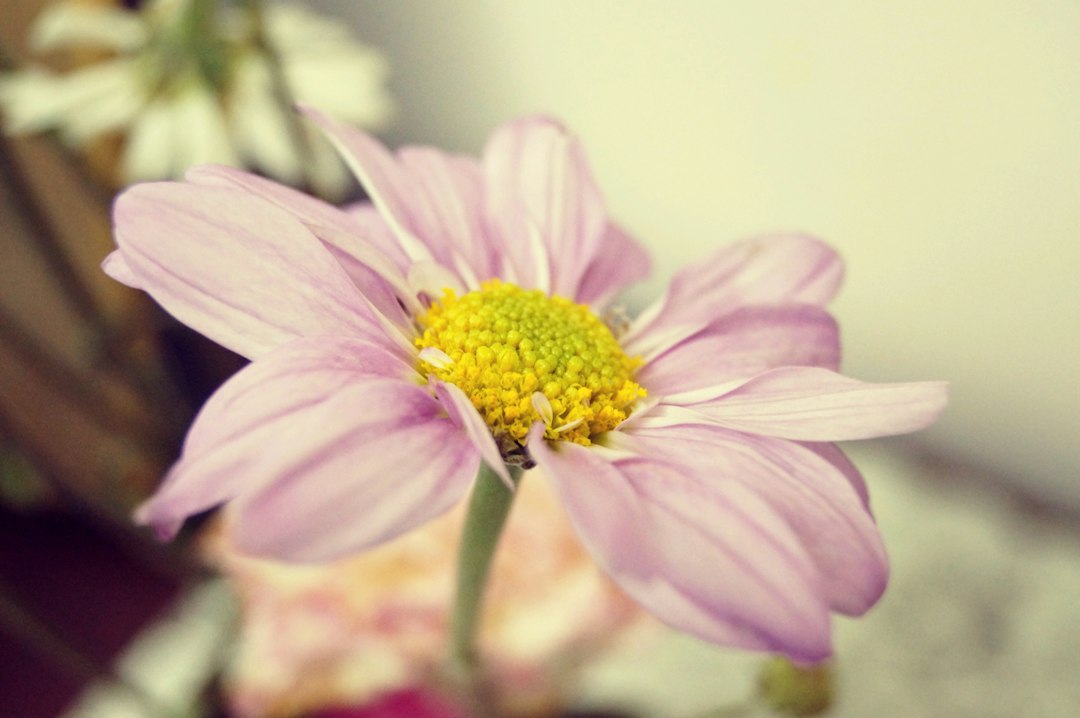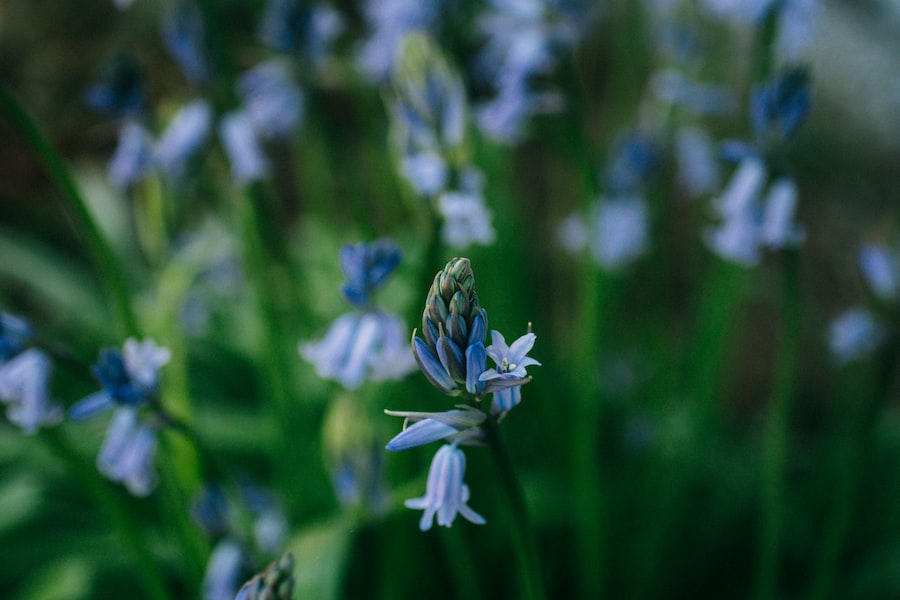Unlock the Secret to Stunning Blooms: A Guide to Getting Your Peace Lily to Flower

Peace lilies, also known as Spathiphyllum, are popular houseplants known for their beautiful white flowers and lush green foliage. They are native to the tropical regions of the Americas and have become a staple in many homes and offices due to their ability to thrive in low-light conditions. Peace lilies are not true lilies, but they are named for their resemblance to the Calla lily.
When it comes to blooming, peace lilies have a unique habit. Unlike many other flowering plants that bloom on a regular schedule, peace lilies have a more sporadic blooming pattern. While some peace lilies may bloom consistently throughout the year, others may only produce flowers once or twice a year. The blooming period can last anywhere from a few weeks to several months.
Key Takeaways
- Peace lilies are popular houseplants known for their beautiful white flowers.
- Factors that affect peace lily flowering include light, temperature, humidity, and soil moisture.
- Choosing the right soil and pot is important for peace lily growth and blooming.
- Proper watering and drainage are crucial for peace lily blooming.
- Adequate lighting and temperature are necessary for peace lily flowering.
Understanding the Factors that Affect Peace Lily Flowering
Several factors can impact the blooming of peace lilies. One of the most important factors is light. Peace lilies thrive in bright, indirect light, but too much direct sunlight can scorch their leaves and inhibit blooming. If your peace lily is not blooming, it may be due to insufficient light. Consider moving it to a brighter location or providing supplemental artificial light.
Temperature and humidity also play a role in peace lily blooming. These plants prefer temperatures between 65-85°F (18-29°C) during the day and slightly cooler temperatures at night. They also thrive in high humidity environments, so misting the leaves or placing the plant on a tray filled with water and pebbles can help increase humidity levels.
Other factors that can affect peace lily blooming include proper watering and drainage, soil composition, and fertilization. It’s important to provide adequate water to your peace lily, but overwatering can lead to root rot and hinder blooming. Well-draining soil and pots with drainage holes are essential to prevent waterlogged roots. Fertilizing your peace lily with a balanced houseplant fertilizer every 2-4 weeks during the growing season can also promote blooming.
Choosing the Right Soil and Pot for Your Peace Lily
Choosing the right soil and pot for your peace lily is crucial for its overall health and blooming. Peace lilies prefer a well-draining soil mix that retains moisture without becoming waterlogged. A good potting mix for peace lilies consists of equal parts peat moss, perlite, and potting soil. This mixture provides good drainage while retaining enough moisture for the plant’s roots.
When it comes to pots, it’s important to choose one with drainage holes to prevent water from pooling at the bottom. This allows excess water to escape and prevents root rot. Additionally, selecting a pot that is slightly larger than the current root ball will allow room for growth without overwhelming the plant.
The Importance of Proper Watering and Drainage for Blooming
| Watering and Drainage | Blooming |
|---|---|
| Overwatering | Can lead to root rot and prevent blooming |
| Underwatering | Can cause stress and prevent blooming |
| Proper watering | Ensures healthy roots and promotes blooming |
| Good drainage | Prevents waterlogged soil and promotes blooming |
Proper watering and drainage are essential for peace lilies to bloom. These plants prefer to be kept evenly moist but not waterlogged. Overwatering can lead to root rot and hinder blooming, while underwatering can cause the plant to wilt and stress, also affecting blooming.
To water your peace lily, wait until the top inch of soil feels dry to the touch before watering thoroughly. Allow any excess water to drain out of the pot, ensuring that it does not sit in a saucer or tray. It’s important to note that peace lilies are sensitive to chlorine and other chemicals found in tap water, so using filtered or distilled water is recommended.
Providing Adequate Lighting and Temperature for Your Peace Lily
Lighting and temperature are crucial factors in peace lily blooming. These plants thrive in bright, indirect light but can tolerate lower light conditions. However, too much direct sunlight can scorch their leaves and inhibit blooming. If your peace lily is not blooming, it may be due to insufficient light. Consider moving it to a brighter location or providing supplemental artificial light.
In terms of temperature, peace lilies prefer temperatures between 65-85°F (18-29°C) during the day and slightly cooler temperatures at night. Extreme temperature fluctuations or prolonged exposure to temperatures outside of this range can stress the plant and hinder blooming. It’s important to keep your peace lily away from drafts and heating or cooling vents.
Fertilizing Your Peace Lily for Optimal Flowering

Fertilization is an important aspect of promoting peace lily blooming. These plants benefit from regular feeding during the growing season, which is typically spring and summer. Using a balanced houseplant fertilizer with equal parts nitrogen, phosphorus, and potassium can provide the necessary nutrients for healthy growth and blooming.
It’s important to follow the instructions on the fertilizer packaging for proper application rates. Overfertilizing can lead to salt buildup in the soil, which can damage the roots and hinder blooming. It’s also a good idea to flush the soil with plain water every few months to remove any excess salts.
Pruning and Propagating Peace Lilies for Better Blooms
Pruning and propagating peace lilies can help encourage blooming and maintain their overall health. Pruning involves removing any dead or yellowing leaves, as well as spent flowers. This not only improves the plant’s appearance but also redirects energy towards new growth and blooming.
To propagate a peace lily, you can divide the plant during repotting. Gently remove the plant from its pot and separate the root ball into smaller sections, making sure each section has roots and leaves attached. Plant each division in its own pot with fresh potting soil and water thoroughly. This process stimulates new growth and can lead to more frequent blooming.
Troubleshooting Common Issues that Hinder Peace Lily Flowering
There are several common issues that can prevent peace lilies from blooming. One of the most common issues is insufficient light. If your peace lily is not receiving enough light, it may not have enough energy to produce flowers. Consider moving it to a brighter location or providing supplemental artificial light.
Pests and diseases can also hinder peace lily blooming. Common pests include spider mites, mealybugs, and aphids. Regularly inspect your plant for any signs of pests and treat them accordingly. Diseases such as root rot or fungal infections can also affect blooming. Proper watering and good airflow can help prevent these issues.
Enhancing the Aesthetics of Your Peace Lily with Creative Display Ideas
Peace lilies are not only beautiful on their own but can also be enhanced with creative display ideas. Consider placing your peace lily in a decorative pot or basket that complements your home decor. You can also group multiple peace lilies together for a stunning display or mix them with other houseplants for a lush and vibrant arrangement.
Another creative idea is to incorporate natural elements such as rocks, moss, or driftwood into the pot or around the base of the plant. This adds visual interest and creates a more natural and organic look. Additionally, you can experiment with different containers such as glass terrariums or hanging planters to create unique and eye-catching displays.
Tips and Tricks for Achieving Beautiful Peace Lily Blooms
In conclusion, achieving beautiful peace lily blooms requires attention to various factors such as light, temperature, humidity, watering, soil, fertilization, pruning, and propagation. Providing the right conditions for your peace lily will encourage healthy growth and blooming.
Remember to place your peace lily in a bright, indirect light location and maintain temperatures between 65-85°F (18-29°C). Keep the soil evenly moist but not waterlogged, and ensure proper drainage to prevent root rot. Fertilize regularly during the growing season with a balanced houseplant fertilizer, and prune and propagate as needed to stimulate new growth and blooming.
By following these tips and tricks, you can enjoy the beauty of peace lily blooms in your home or office. Experiment with different techniques and find what works best for your individual peace lily. With proper care and attention, your peace lily will reward you with its stunning flowers for years to come.
If you’re struggling to get your peace lily to bloom, you’re not alone. Many plant enthusiasts face this challenge. However, there’s good news! I recently came across a helpful article on Lawn World that provides valuable tips and tricks on how to encourage your peace lily to bloom. From understanding the right lighting conditions to proper watering techniques, this article covers it all. If you’re eager to see your peace lily in full bloom, I highly recommend checking out this insightful resource: https://www.lawnworld.com/sitemap.html.



